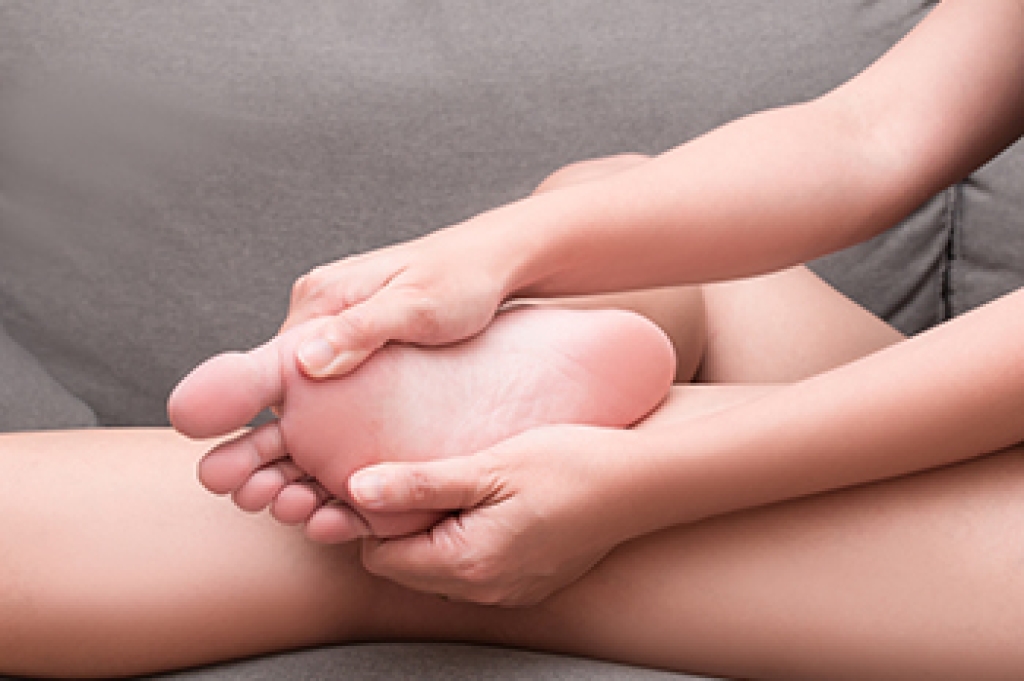 Morton’s Neuroma—otherwise known as Morton’s metatarsalgia, Morton’s disease and Morton’s neuralgia, is a swollen, non-cancerous growth of nerve tissue that usually clusters between the third and fourth toes. This can cause a good deal of pain, particularly in the ball of the foot. Other symptoms include a burning, tingling, or numbness in the toes, pain while curling the toes, and the sensation of having a pebble in the bottom of your shoe by the ball of the foot. Possible causes of this ailment may consist of wearing high heels regularly and participating in certain sporting activities for extended periods of time. If you are experiencing this kind of pain in the ball of your foot, a podiatrist can examine you and run a series of tests to determine your nerve response and foot function. Treatment methods range from orthotics to injection therapies, and in severe cases surgery may be necessary. It is suggested that you visit a podiatrist as soon as possible if you experience any of the symptoms mentioned.
Morton’s Neuroma—otherwise known as Morton’s metatarsalgia, Morton’s disease and Morton’s neuralgia, is a swollen, non-cancerous growth of nerve tissue that usually clusters between the third and fourth toes. This can cause a good deal of pain, particularly in the ball of the foot. Other symptoms include a burning, tingling, or numbness in the toes, pain while curling the toes, and the sensation of having a pebble in the bottom of your shoe by the ball of the foot. Possible causes of this ailment may consist of wearing high heels regularly and participating in certain sporting activities for extended periods of time. If you are experiencing this kind of pain in the ball of your foot, a podiatrist can examine you and run a series of tests to determine your nerve response and foot function. Treatment methods range from orthotics to injection therapies, and in severe cases surgery may be necessary. It is suggested that you visit a podiatrist as soon as possible if you experience any of the symptoms mentioned.
Morton’s neuroma is a very uncomfortable condition to live with. If you think you have Morton’s neuroma, contact Gerald Erskine, DPM of Seneca Family Footcare. Our doctor will attend to all of your foot care needs and answer any of your related questions.
Morton’s Neuroma
Morton's neuroma is a painful foot condition that commonly affects the areas between the second and third or third and fourth toe, although other areas of the foot are also susceptible. Morton’s neuroma is caused by an inflamed nerve in the foot that is being squeezed and aggravated by surrounding bones.
What Increases the Chances of Having Morton’s Neuroma?
- Ill-fitting high heels or shoes that add pressure to the toe or foot
- Jogging, running or any sport that involves constant impact to the foot
- Flat feet, bunions, and any other foot deformities
Morton’s neuroma is a very treatable condition. Orthotics and shoe inserts can often be used to alleviate the pain on the forefront of the feet. In more severe cases, corticosteroids can also be prescribed. In order to figure out the best treatment for your neuroma, it’s recommended to seek the care of a podiatrist who can diagnose your condition and provide different treatment options.
If you have any questions, please feel free to contact our office located in Ronceverte, WV . We offer the newest diagnostic and treatment technologies for all your foot care needs.




